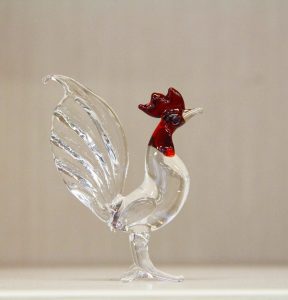Hello Everyone!
CSI TRAINING! During our unit time, we have continued to look at some of the tools CSI agents and forensic scientists have at their disposal to solve crimes! How do we identify the suspect?
Yesterday, we talked about how everyone’s handwriting has distinct characteristics, such as line quality, spacing, height and width of letters, how letters connect, unusual letter formation, pen/pencil pressure, slant, and flourishes. With these characteristics, we can analyze someone’s handwriting and then perhaps match their writing to evidence found at the scene of the crime. Each student analyzed their own handwriting (some students had to learn cursive with Ms. D to do this, as we went through all of the capital and lowercase cursive letters), and then they did a guessing game, trying to discern between the genuine and fake signatures of their classmates. Don’t forget to turn in both handwriting handouts!
Today, we talked about forensic odontology, which is dental forensics. Everyone has a distinct dental impression when they bite (including identical twins!) and so dental information can help identify both criminals and victims when matched with evidence from the crime scene. Everyone had to analyze their own dental impression, and then we made some samples to use tomorrow, when everyone will try to match the dental impressions of their classmates with the crime scene samples!
On the 26th, we will have a forensic scientist come and visit our class to describe a real case she has been working on recently! Thank you to Sandy, Aaron’s mom, for the contact!
CLOSE OBSERVATION AND ANALOGIES: Today we used our LOUPE magnifiers to examine a range of natural samples; drew pictures of the specimens carefully from multiple perspectives; and described the animals, plants and rocks with adjectives, metaphors, similes, and analogies.
This involved a discussion about ANALOGIES and how scientists use them to help identify and name the items they are investigating. We use analogies all the time to describe something new with something we have already experienced, or to provide greater description about something so people will understand. For example: My room is a mess of snakes. The room is not necessarily full of snakes, but perhaps the mess you have in there is a tangled web of dirty laundry, toys, shoes, and more!
We use analogies in TAXONOMY which is the science of classifying organisms. To better understand this, students looked up an animal of their choice, found the scientific name, and then broke down the Greek and Latin parts. I encourage everyone to continue looking at this, as I think the word taxonomy was new for everyone. Many students had heard of animal classification terms, however, and we talked about species, genus, family, order, class, phylum, and kingdom, as well.
ETHICS: Yesterday, we read the book Frederick, which will be part of a series of picture books we discuss together this term, with each one being related to philosophy around making choices and ethics. We have talked about how our solutions to problems often depend on our perspective and personal philosophy, and these books will provide an opportunity for thinking about the lens we look through when making decisions. For this book, the question was: When making decisions, whose priorities are the most important? Yours or the community’s? Can there be a mix of the two? I invite you to discuss these books at home and see what you think!
PE/Health: Today we continued to get our hearts pumping with AEROBICS! If you would like to see the video we used today for our aerobics routine, check it out here!
E-Portfolios: The students have noticed a new page on the top menu of the blog for e-portfolios. I will be introducing this soon to everyone. Each person in the class will have their own mini-blog, which will be used to take pictures of what we are doing in class, to reflect on their learning, and to share their knowledge with those at home. It is a great time to introduce this during our unit involving lots of close observation, analysis, and reflection. Each student will receive a user name and password. We will set up essential agreements together on how to use it, postings are only made during class for now, and the password should not be shared with anyone other than parents and guardians, as they are meant to be private blogs that only Ms. D, parents, and the student themselves can see. More on this to come!
Caribou Math Test Tomorrow!
Have a great night! Enjoy this cartoon from ASAP Science, which I think is a great representation of problem solving at its finest! (and is funny, too.)

Ms. D



